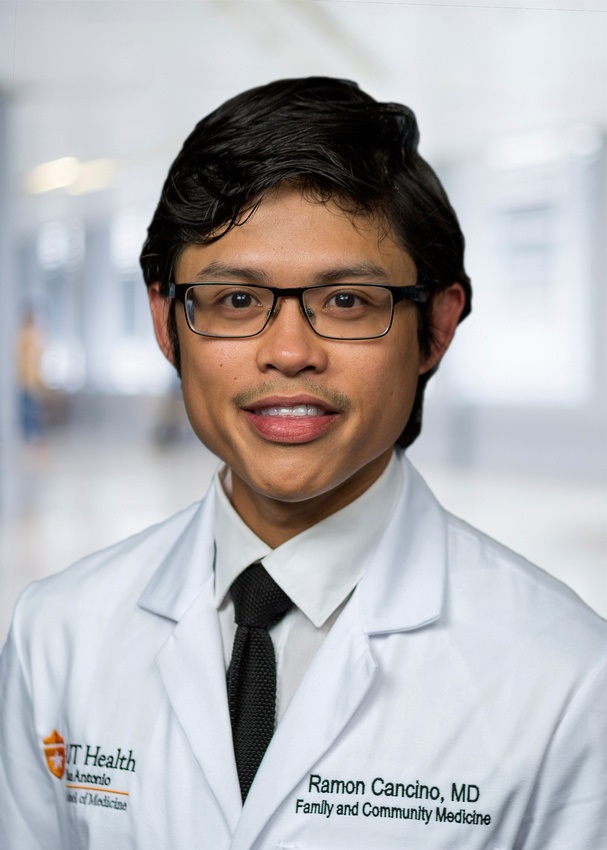If a virus threatened our state and we had a vaccine to protect us, most of us would get the shot, right? Not if the 2018-2019 flu season is any indication. Last fall/winter, only 47.9% of the Texas population received a flu shot and the U.S. vaccination rate was 49.2%.
The COVID-19 pandemic should be motivation enough to change our behavior and get the flu shot this year, said UT Health San Antonio primary care director Ramon Cancino, MD, MS, FAAFP.

“Unless there are medical considerations that make a flu shot inadvisable, we must all get them,” Dr. Cancino said. “In doing so, we can come together as a team to help our entire community.”
Flu can be serious
Influenza (“flu”) viruses spread in the United States every year from the late fall through early spring. While most infected people recover without serious complications, flu infections can be associated with serious illnesses, hospitalizations and deaths, particularly among older adults, very young children, pregnant women, and persons of all ages with certain chronic medical conditions.
“As a family medicine physician in San Antonio, I have seen illness cause fear, psychological distress and even financial hardship among patients,” Dr. Cancino said. “Illness can also impact friends, close contacts and loved ones. This is typically magnified during flu season. The COVID-19 pandemic adds another factor to consider: the flu and COVID-19 can cause similar symptoms.”
Expect COVID-19 precautions
Like COVID-19, the flu can present with fever, cough and shortness of breath. This year, patients who go to clinics, emergency rooms and hospitals with these symptoms may be evaluated for COVID-19 and the flu. These patients should expect COVID-19 safety precautions to be applied even in situations when they think they only have the flu. These precautions are necessary to keep both patients and medical front-liners safe.
The flu vaccine can reduce symptoms that might be confused with those of COVID-19. In addition, the vaccine can decrease the severity of the illness, reduce hospitalizations, protect pregnant women, and save lives of children and adults.
Steps to take
People can protect their communities by doing four things, Dr. Cancino said:
1. Call your Primary Care Physician (PCP) and schedule a time to get your annual flu shot. Flu shots are safe for everyone, except a few individuals whose medical conditions make having a shot inadvisable. Many PCP offices carry flu shots to give to patients, and they will start receiving them from suppliers soon. Many offices will have “flu shot clinics” where patients can walk in or schedule an appointment to get flu shots. If you do not have a PCP, find one who is right for you.
2. Engage your friends and community. The more people who are vaccinated, the less likely it is for this contagious disease to be transmitted to others. This is called “herd immunity.” Remind friends, family and community members that, even though they may not be in one of the high-risk groups, getting vaccinated prevents them from getting the flu and transmitting it to someone else who may be more vulnerable.
3. Follow current recommendations regarding COVID-19. The same actions that protect us and others from COVID-19 (mask wearing, hand washing, social distancing) will protect us also from the flu. Continue to follow guidance from medical leaders around these mitigation strategies.
4. Get evaluated by the appropriate person if you feel sick. Call your physician and get evaluated either in person or via telemedicine. Physicians will follow U.S. Centers for Disease Control and Prevention (CDC) and health department guidance on COVID-19 and flu testing if your assessment requires it. Your symptoms can often be diagnosed and treated without a trip to the emergency room or hospital.
Last flu season, the CDC estimated that between 39 million and 56 million individuals had a flu infection and that there were between 24,000 and 62,000 flu-related deaths. Bexar County saw about 400 flu-related deaths during the 2019-2020 flu season, according to the Bexar County Influenza Surveillance Report. As of Sept. 10, San Antonio has reported nearly 48,000 cases of COVID-19 and 990 deaths confirmed to be related to the disease.
Play as a team: Get a flu shot
“Each of these data points represents the life of a human being,” Dr. Cancino said. “We should strive to prevent such loss and suffering at every opportunity.
“I have seen illness stress our health system and our community, but I have also seen how illness can bring people together and remind us that we are all on the same team. As a team, we must recognize how playing our own small parts can contribute to grand success. Helping to increase our community’s flu shot rate by getting a flu shot and encouraging your friends to do the same can help our team. We can and must do this together because our lives and well-being depend on it.”
Dr. Cancino is senior director of medical management and director of the Primary Care Center for UT Health Physicians, the clinical practice of the Joe R. and Teresa Lozano Long School of Medicine at UT Health San Antonio.
# # #
The Long School of Medicine at The University of Texas Health Science Center at San Antonio is named for Texas philanthropists Joe R. and Teresa Lozano Long. The school is the largest educator of physicians in South Texas, many of whom remain in San Antonio and the region to practice medicine. The school teaches more than 900 students and trains 800 residents each year. As a beacon of multicultural sensitivity, the school annually exceeds the national medical school average of Hispanic students enrolled. The school’s clinical practice is the largest multidisciplinary medical group in South Texas with 850 physicians in more than 100 specialties. The school has a highly productive research enterprise where world leaders in Alzheimer’s disease, diabetes, cancer, aging, heart disease, kidney disease and many other fields are translating molecular discoveries into new therapies. The Long School of Medicine is home to a National Cancer Institute-designated cancer center known for prolific clinical trials and drug development programs, as well as a world-renowned center for aging and related diseases.
The University of Texas Health Science Center at San Antonio, also referred to as UT Health San Antonio, is one of the country’s leading health sciences universities and is designated as a Hispanic-Serving Institution by the U.S. Department of Education. With missions of teaching, research, patient care and community engagement, its schools of medicine, nursing, dentistry, health professions and graduate biomedical sciences have graduated more than 37,000 alumni who are leading change, advancing their fields, and renewing hope for patients and their families throughout South Texas and the world. To learn about the many ways “We make lives better®,” visit www.uthscsa.edu.
Stay connected with The University of Texas Health Science Center at San Antonio on Facebook, Twitter, LinkedIn, Instagram and YouTube.


